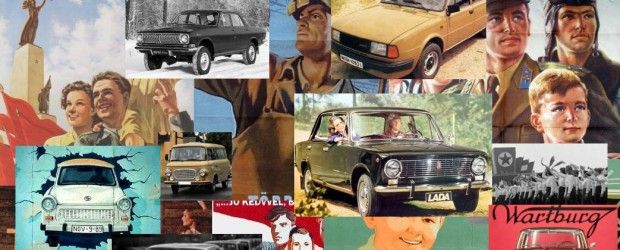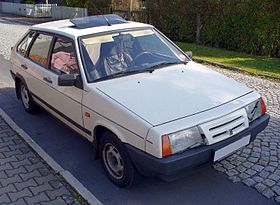The Lada Samara is an economy car produced by Soviet/Russian vehicle manufacturer AvtoVAZ under the Lada brand since 1984. The brand name Samara originally was used only for exported models, in Russia the same model was called "Sputnik" (satellite), until 1991, when the sedan version of Samara entered in production, using the export name.
Lada Samara test in Hungarian:
Introduction
The Samara was to build on the success of the traditional Fiat 124-based range, by providing a car that combined a robust build and ease of maintenance with a modern style. It was produced in various three, four and five door designs with 1.1, 1.3 and 1.5 litre petrol engines. Lada had hoped that the Samara would enable it to compete for sales in the mainstream European car market. It was the second autonomous design from AvtoVAZ (the first was the Niva SUV), and the first one not based on the Fiat derived mechanics.

Development
VAZ had made their first front-wheel drive prototype, the VAZ 1101, in the early 1970s. The engine from the Fiat 127 was used. Further development of this project led to the 900 cc "Ladoga" three-door prototype in 1976. On 31 December 1979 the first VAZ 2108 prototype was completed. During VAZ 2108 development, VAZ engineers also looked closely at a range of European competitors like the Volkswagen Golf, Opel Kadett D, Ford Escort Mark III, and Volvo 340. While named "Sputnik" at home, it was more commonly known as the "Eight" after the last digit in the model code. The export version was named after the Samara River, a tributary to the Volga. The first cars left the production line on 18 December 1984.
Planned from the beginning to be available with 1.1, 1.3, and 1.5 litre inline-fours, originally only the 1.3 (with the three-door bodywork) was available. The engines were developed with help from Porsche, and most Western observers assumed that Porsches involvement went beyond just the engines.
Despite NAMI (National Automobile Institute) having allowed the involvement of Porsche engineers in the engine development, the Samara never achieved the same success as the Riva, even though it did prove to be a robust car with a modern style and an initially competitive price. Even so, it suffered from variable and often doubtful build quality and some of the uglier handling qualities that had always been associated with Lada. The cars molded plastic front grille was also a point of contention, as it was often seen to be ugly and cheap-looking; many were replaced with after-market grilles, often even by Lada dealers themselves before the cars were sold.
The disputed front grille was soon replaced by a smoother design. A number of other minor alterations followed, including fuel injected engines to meet emissions regulations in export markets. The long planned sedan version (VAZ 21099) finally appeared in 1990. To mark this as a separate model, it had a different interior and also a different front end. On the earlier Samaras the front clip had been a separate piece, surrounding the headlights. On the sedan version, the fenders go all the way up to the headlights and the lip of the bonnet dips between the headlights and meets the slimmer grille. This front design was later applied to Samara hatchbacks, beginning with the 1.5 and gradually being applied to the lesser models as well. The 1.1 and 1.3 were eventually taken out of production, having already been withdrawn from export markets.


